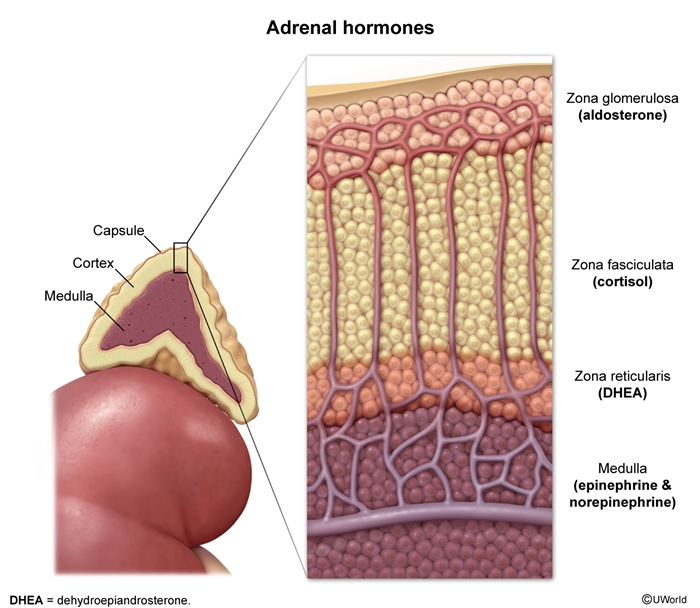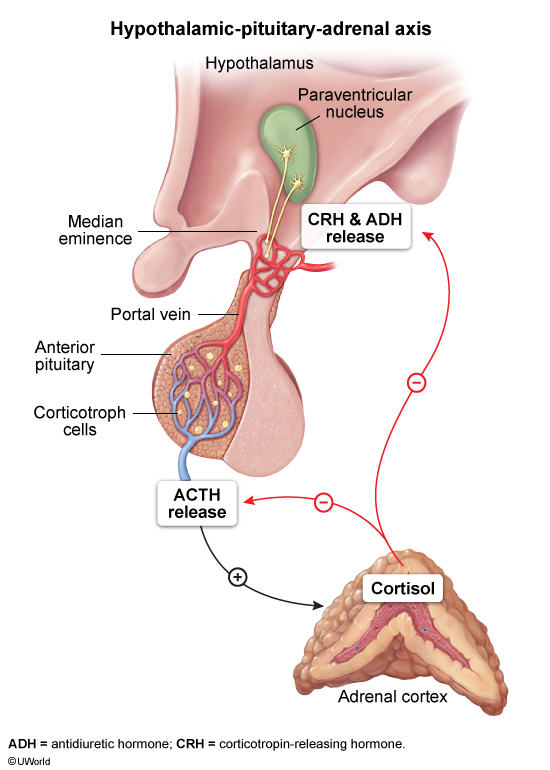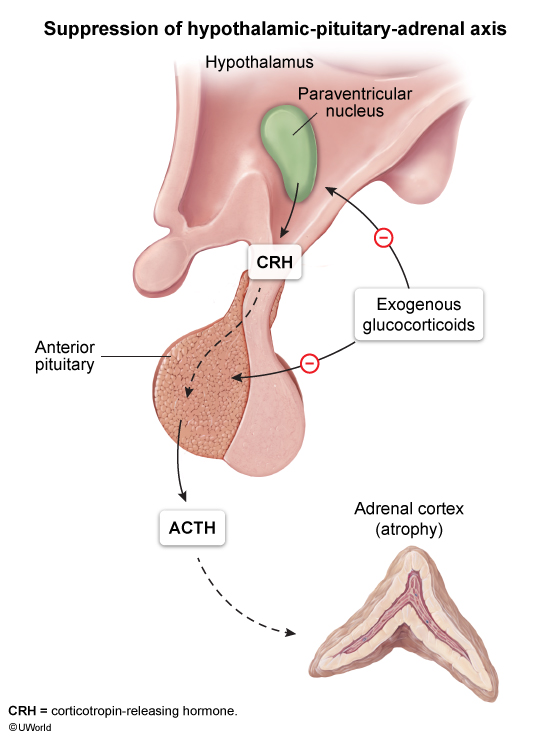Adrenal Insufficiency
Article Sections
Introduction
Adrenal insufficiency (AI) is characterized by inadequate production of glucocorticoids (cortisol) and/or mineralocorticoids (aldosterone) by the adrenal glands. AI can present acutely or chronically with varying degrees of severity.
Pathophysiology and etiologies
The adrenal glands, located above the kidneys, produce several essential hormones. The outer layer, the adrenal cortex (Figure 1), synthesizes 3 classes of hormones:
- Glucocorticoids (primarily cortisol) exert a broad spectrum of effects (eg, fight response), including maintaining vascular tone (cortisol potentiates alpha-1 stimulation).
- Mineralocorticoids (primarily aldosterone) help regulate blood pressure and potassium balance by promoting renal sodium retention and potassium secretion.
- Androgens (eg, dehydroepiandrosterone [DHEA]) contribute to sexual function in females (testes are the main source of androgens in males).
The hypothalamic-pituitary-adrenal (HPA) axis is responsible for regulating glucocorticoid production (
Continue Learning with UWorld
Get the full Adrenal Insufficiency article plus rich visuals, real-world cases, and in-depth insights from medical experts, all available through the UWorld Medical Library.
Figures

Figure 1

Figure 2

Figure 3
Tables
Table 1
Table 2